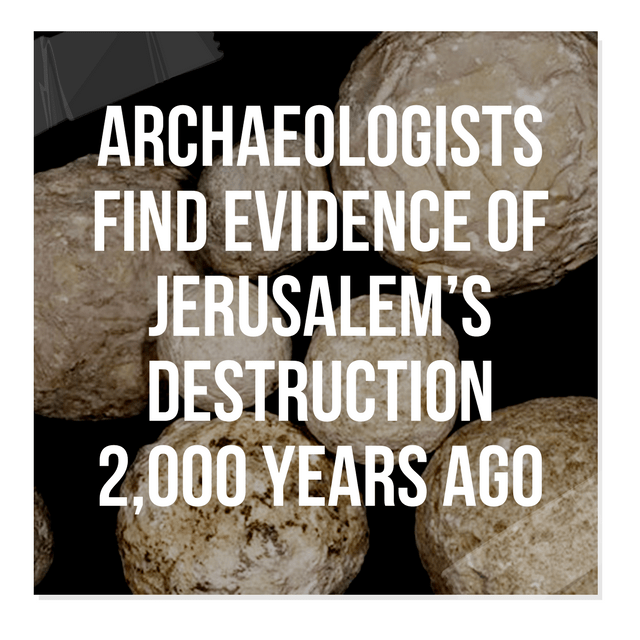 This article originally appeared on CBN News, May 25, 2017
This article originally appeared on CBN News, May 25, 2017
JERUSALEM, Israel – As Israelis celebrate the 50th anniversary of the reunification of Jerusalem this week, archaeologists have found evidence of the battle for Jerusalem two millennia ago as they excavate the main thoroughfare leading to the Second Temple before its destruction by the Romans in 70 AD.
The road, about 20 feet below the surface, leads from the Pool of Siloam to the Temple Mount. Archaeologists believe it could have been built during the reign of Pontius Pilate and would likely have been the route Jesus walked on his way up to the Temple.
“This is probably where Jesus acted and marched during his time,” co-director of the excavation, Moran Hagbi, told CBN News. “Now it’s opening a new era in the research of Jerusalem.”
Hagbi and Nahshon Szanton are co-directing the work.
 “Two thousand years after the destruction of Jerusalem and 50 years since its liberation, we are going back to the water cisterns, the market and the city square on the eve of its destructions,” the Israel Antiquities Authority quoted them in a press release on Thursday.
“Two thousand years after the destruction of Jerusalem and 50 years since its liberation, we are going back to the water cisterns, the market and the city square on the eve of its destructions,” the Israel Antiquities Authority quoted them in a press release on Thursday.
Among the finds are arrowheads and ballista balls used in the battle against Jerusalem, as recorded by historian Flavius Josephus.
“On the following day, the Romans, having routed the brigades from the town, set the whole on fire as far as [the pool of] Siloam,” the historian wrote.
 Szanton and Hagbi say their finds verify the authenticity of Josephus’ descriptions.
Szanton and Hagbi say their finds verify the authenticity of Josephus’ descriptions.
The Romans used ballista balls, fired by catapults, to bombard Jerusalem. They also discovered arrowheads used by the Jewish rebels in the hard-fought battles against the Roman legionnaires, exactly as Josephus described.
 Using state-of-the-art research methods from the fields of biology, geology and natural science, archaeologists have so far uncovered a 100-meter (yard) long by 7.5-meter-wide section of the road.
Using state-of-the-art research methods from the fields of biology, geology and natural science, archaeologists have so far uncovered a 100-meter (yard) long by 7.5-meter-wide section of the road.
Watch the video and read more at CBN News

